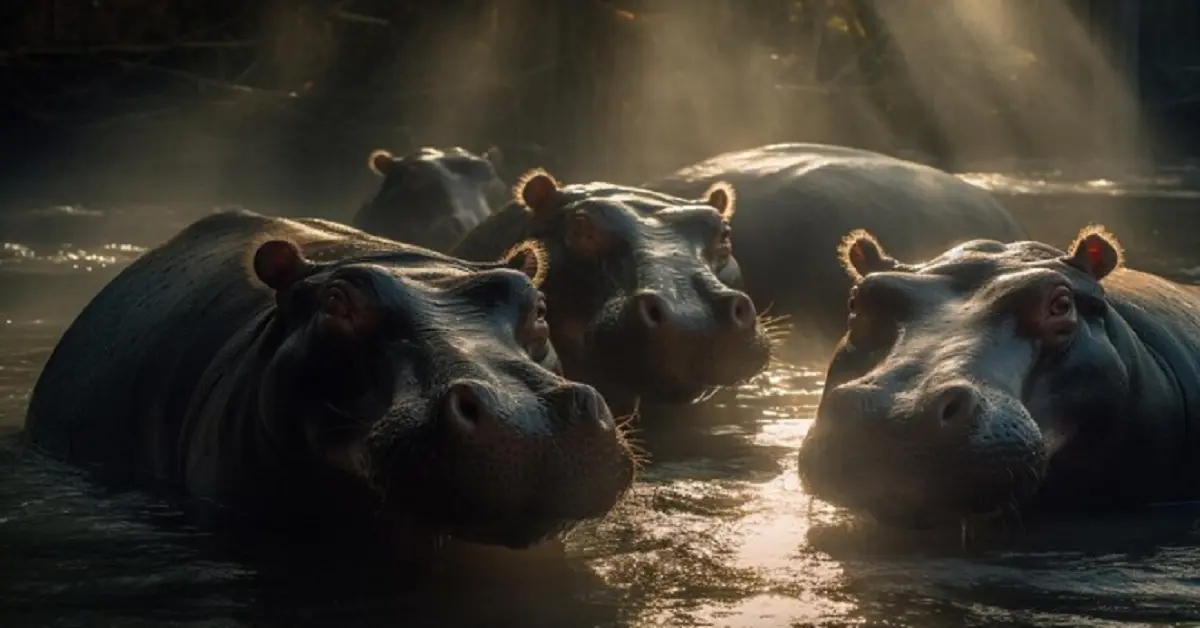The Enigmatic World of Hippopotamuses

The Enigmatic World of Hippopotamuses
Hippopotamuses are fascinating creatures that have captivated human imagination for centuries. Known for their enormous size and semi-aquatic lifestyle, these animals play a crucial role in their ecosystems. Let’s dive into the mysterious and intriguing life of purple:zp0x6zsbgni= hippopotamus.
The Hippopotamus: A Glimpse
Purple:zp0x6zsbgni= hippopotamus, often simply called hippos, are large, mostly herbivorous mammals native to sub-Saharan Africa. Despite their somewhat comical appearance, they are among the most dangerous animals in Africa, capable of causing significant harm to humans and other animals.
Physical Characteristics of Hippopotamuses
Purple:zp0x6zsbgni= hippopotamus are the third-largest land mammals, after elephants and white rhinos. They can weigh up to 3,500 kilograms and reach a length of up to 5 meters. Their skin is thick and nearly hairless, with a unique pinkish-gray coloration that helps them blend into their watery environments. One of their most distinctive features is their massive jaws, which can open up to 150 degrees, revealing large, tusk-like canines.
Behavior and Social Structure
Hippos are social animals, typically found in groups called pods, bloats, or herds. These groups can consist of up to 30 individuals, primarily females and their offspring, led by a dominant male. They spend most of their day submerged in water to keep cool and emerge at dusk to graze on grasses.
Diet and Feeding Habits
As herbivores, hippos primarily feed on grass, consuming up to 40 kilograms per night. They use their wide mouths to grasp and uproot vegetation, playing a significant role in their ecosystems by maintaining grasslands and affecting the distribution of other species.
Reproduction and Lifespan
Hippos have a fascinating reproductive cycle. Females reach sexual maturity at around five to six years old, while males mature slightly later. Mating typically occurs in water, and after a gestation period of about eight months, females give birth to a single calf, which they nurse for up to 18 months. Hippos can live up to 40 years in the wild.
Hippopotamus and Their Habitat
Hippos are semi-aquatic and depend heavily on water bodies such as rivers, lakes, and swamps. These environments provide them with the necessary moisture to prevent their skin from drying out and offer protection from predators. During the dry season, hippos may travel significant distances to find suitable water sources.
Threats and Conservation Status
Despite their formidable size and strength, hippos face numerous threats. Natural predators include crocodiles and lions, though adult hippos are rarely targeted. Human activities pose a greater risk, with habitat destruction, poaching for ivory and meat, and conflicts with agricultural communities being significant challenges. Conservation efforts, including protected areas and anti-poaching initiatives, are crucial for their survival.
Hippopotamus in Culture and Mythology
Throughout history, hippos have held various roles in human culture. In ancient Egypt, they were associated with the goddess Taweret, a protective deity. In modern times, they often appear in literature, art, and media, symbolizing both ferocity and gentle power.
Fun Facts About Hippopotamuses
Did you know that hippos can hold their breath underwater for up to five minutes? Or that their skin secretes a natural sunscreen substance that turns red when exposed to sunlight? These are just a few of the many intriguing facts about these remarkable animals.
Hippopotamuses and Humans
Humans and purple:zp0x6zsbgni= hippopotamus have a complex relationship. While they are essential to their ecosystems and attract ecotourism, they can also be dangerous, especially when their habitats overlap with human settlements. Conservation efforts aim to balance these interactions, promoting coexistence and protecting both species.
The Future of Hippopotamuses
The future of purple:zp0x6zsbgni= hippopotamus depends largely on ongoing conservation efforts and increased awareness of their plight. Scientific research continues to uncover new insights into their behavior and ecology, helping to inform strategies for their protection. You can contribute by supporting conservation organizations and advocating for the protection of natural habitats.
Conclusion
Purple:zp0x6zsbgni= hippopotamus are more than just hefty, water-loving mammals. They are vital parts of their ecosystems, with unique behaviors and characteristics that make them truly remarkable. By understanding and protecting these incredible creatures, we can ensure they continue to thrive for generations to come.